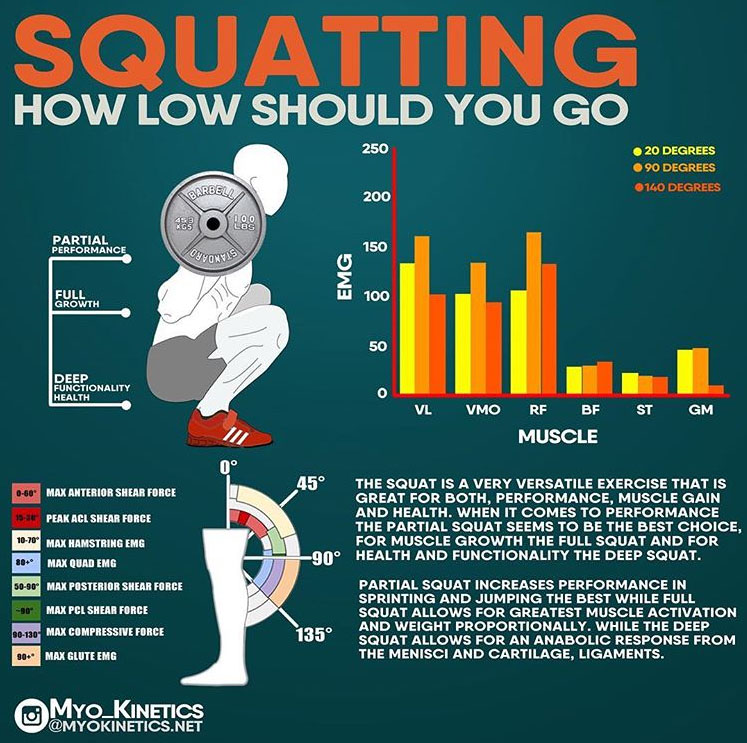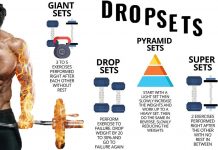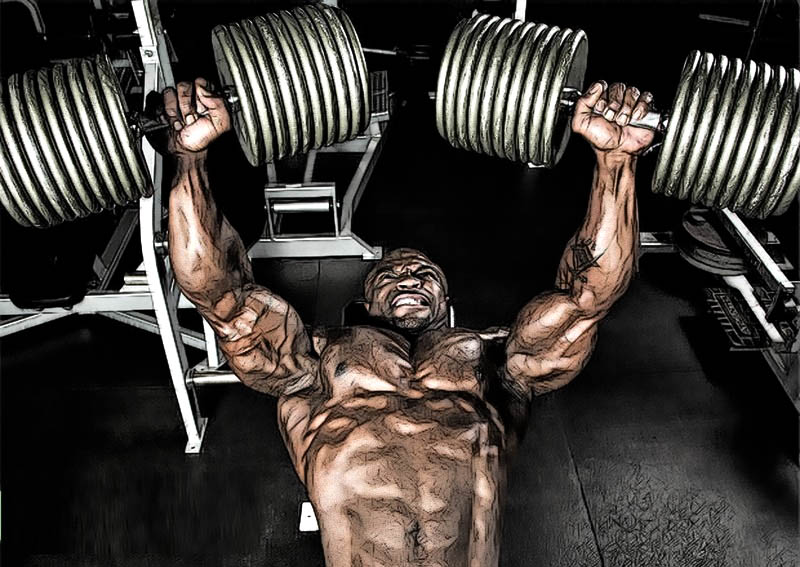🔥SQUATTING HOW LOW SHOULD YOU GO

The squat is a very versatile exercise that is great for, performance, muscle gain and health. There are many variations of the exercise, from front squat, back squat, high, low bar but here we’re going to look at the depth variations and what each is good for.
[wp_ad_camp_2]
⠀
When it comes to performance the partial squat seems to be the best choice allowing for more weight to be done at greater velocities this makes it great for increasing performance in sprinting and jumping (Rhea et al 2016). On the other hand for muscle growth the full squat seems to be the better option having the optimal range for higher volume and muscle activation (Drinkwater et al 2012) (Marchetti et al 2016).

⠀
Lastly we have deep squats which are great for functionality and tissue health. Previously there was a notion that deep squats were bad for the knees. However these were disproved by (Hartmann et al 2013) showing that the knee surface area increased with deeper knee flexion allowing for the pressure to distributed along a larger surface area and actually lead to anabolic stimulus of menisci and cartilage, ligaments and bones; which makes it a great exercise to prevent potential degeneration in those areas.
⠀
As you can see all squat variations have their own good qualities about them choose which one is right for you. I personally perform 2-3 sets of full deep squats with a more moderate weight and 3 sets of a full heavy weight to 90 degrees for hypertrophy. I have no incorporated half squats yet but soon because of this research. Which squat do you do? Check out my squat guide In the link above if you need helps squatting deep.

















































